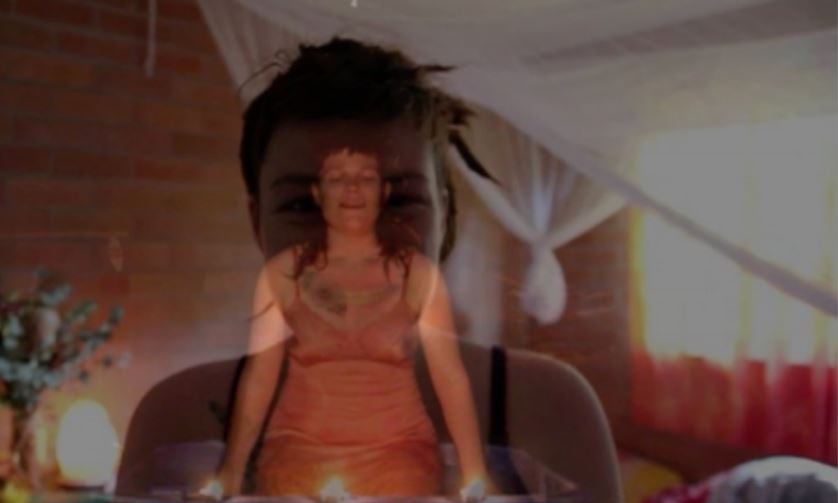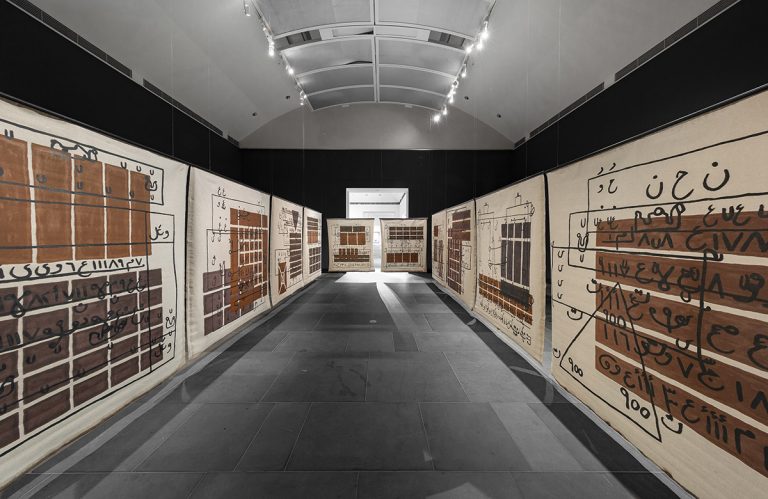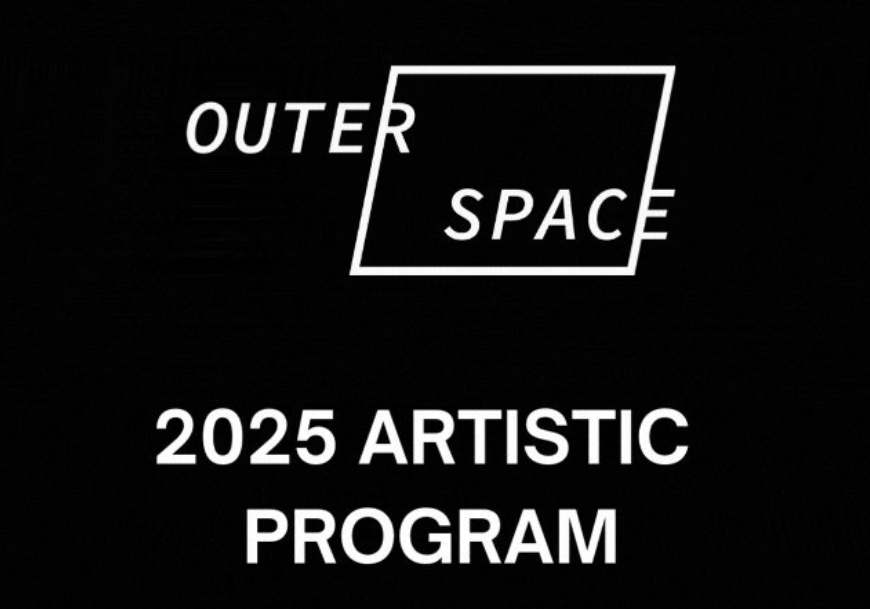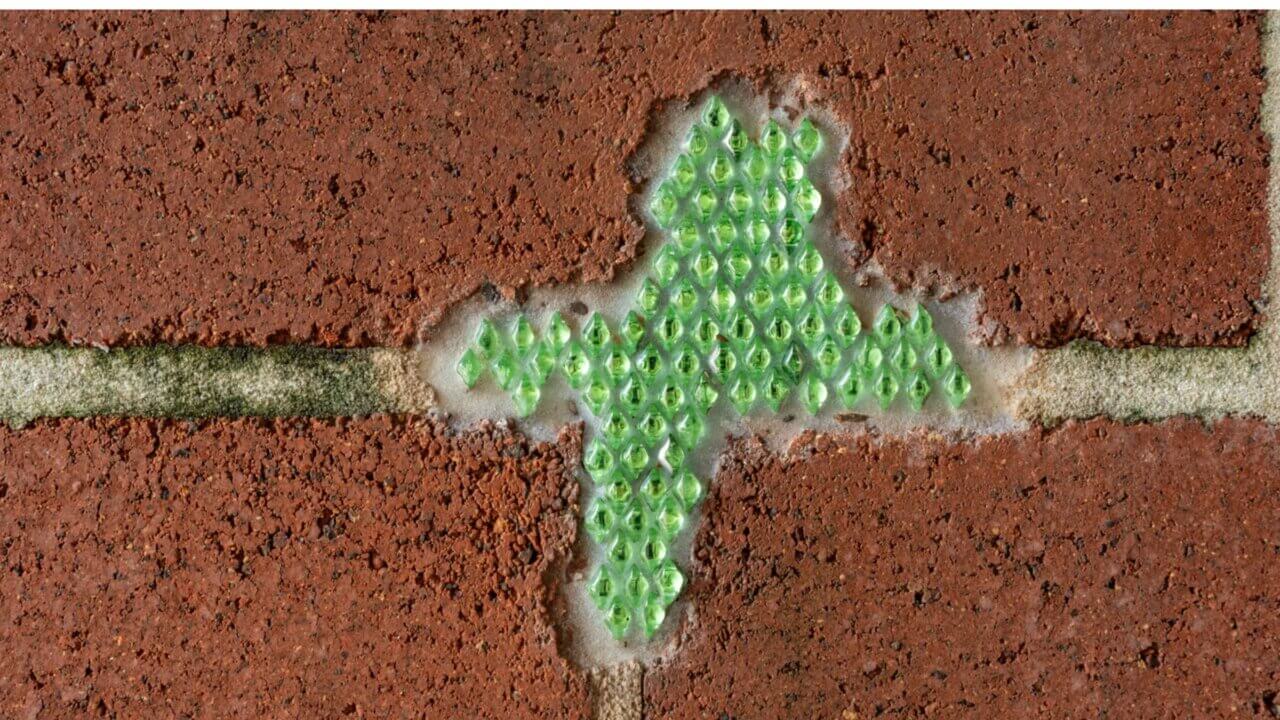
But now there’s nowhere to hide
Since you pushed my love aside
I’m out of my head
Hopelessly devoted to you
Hopelessly devoted to you
Hopelessly devoted to you [1]
Performing is a natural and familiar form of expression for the artist, Erin Groenenboom. The artist’s performances are not for entertainment, nor ‘an act’ executed with an audience in mind. Her performances and installations are intimate expressions of her everyday experiences, through which the artist seeks to achieve solace and self-awareness. Her practice centres on the examination of introspective process and ritual in contemporary visual art. Erin aims to create spaces that evoke opportunity for stillness and contemplation, and though deeply personal, she encourages audience to both view and interact with her works.
The work in this exhibition, Leave (Get Out), explores the freeing of the mind, body and spirit from the residues of past relationships and associated emotions including longing and pain. The three works in this exhibition comprise of audio-visual installations and performance. The exhibition title, Leave (Get Out) is one of many references to music and popular culture in this exhibition. The song of the same name, by JoJo, is a youthful angry and angst filled R&B pop song – reflective of a popular response to break ups. It sits in stark contrast to the sentiment of Erin’s work, which express a reflective approach and communication of the suffering associated with heartbreak.
n her audio work, I should have listened to Marina, Erin uses audio from footage captured during a talk by the artist Marina Abramovic, in which Marina states, “An artist should avoid falling in love with another artist”. Can one choose not to fall in love? What are the particular perils associated with two artists falling in love? The artist’s repetition of Marina’s statement in this work turns her words into a chant like hum. This allusion to the benefit of hindsight and shared experiences of heartbreak forms a connection between the artists, and in turn, the audience, who will form their own interpretation of Marina’s advice.
A suburban backyard with a water filled plastic blue tub and candles is presented to us in hopeless – a video installation in which the artist sings an excerpt of Olivia Newton John’s Hopelessly devoted to you while kneeling in the water. There is an honesty and rawness in the artist’s execution and intensity in her voice and poise. Erin talks about her interest in how we form associations with songs (and other items), appropriating them for our own purposes to mean something very personal, which may bear no relationship to the songwriter’s own intentions: “Why do I indulge in listening to certain songs for days on end, eternally embedding them with a certain person, time, place, or emotion?”[2]. We understand that this song has come to take on a new meaning, and the setting suggests something sacred or ritualistic is taking place. There is also a stillness and understated nature to this work, in which the artist has sought to achieve a meditative space.
The meditative quality connects to the artist’s interest in Eastern mysticism, particularly Buddhism. In Buddhism, meditation practise is paramount as a means to achieve balance and awareness, with the Buddha reaching enlightenment (complete state of self-realisation) through meditation [3]. Erin is interested in how the body is able to process emotions in a way that the mind and heart cannot achieve. Through drawing on meditation practice in her performance work.the artist speaks of the emotional and spiritual release experienced as well as a sense of being present in the moment [4]. Marina draws attention to how meditation traditions across cultures all share the aim of being present, which she also aspires to in her work, “how to get into that moment of now that is always escaping us”[5]. . The Buddhist understanding that life is suffering also has particular resonance [6]. This suffering arises from desire, with any fulfilment being temporary due to the impermanent nature of all things [7]. The beliefs of Eastern mysticism are highly influential in Erin’s work, as are artists inspired by these beliefs including Bill Viola, along with Marina Abramovic [8].
The live performance, reject reflex, is a piece where the artist will cut off all of her hair while singing the song These days by Nico. The artist states: “Why do I get the urge to cut my hair or get a tattoo after a break up? Am I trying to reclaim the body that someone else is finished with?” [9]. Many relationship sites and blogs raise this phenomenon – the idea of making a physical change to the body to symbolise a fresh start – with the hope that the mind and soul will follow suit.
These artworks are each deeply personal and communicate experiences unique to the artist. In this way, they may appear alienating or uncomfortable to witness, as though we are privy to something deeply private and personal. Yet the sentiments expressed are very human, honest and relatable, with the pain of heartbreak unavoidable for many! Laurie Anderson raises the idea of a Buddhist aesthetic, where the work demonstrates “there is an understanding – or illumination of – impermanence, emptiness, suffering (…)” [10], and Erin’s body of work encapsulate these ideas and others that connect strongly with Eastern mysticism based influences more broadly. Her intimate audio-visual installations and performance create a space for stillness, and an opportunity for audiences to view or participate in her heartfelt explorations of the longing and pain associated with heartbreak.
– Sarah Barron 2015
REFERENCES
[1] AZLyrics. Olivia Newton John lyrics: Hopelessly devoted to you. [Internet]. 2015 [cited 2015 Sept 20]. Available from: hKp://www.azlyrics.com/.
[2] ArNst’s exhibiNon submission 2015.
[3] Keown D. Buddhism: a very short introducNon. 2nd ed. Oxford University Press: Oxford; 2000. P. 44.
[4] In conversaNon with the arNst 27 August 2015.
[5] De Johgh K. Gold S. Lodermeyer P. Rietmeyer R. The arNst is present: A conversaNon with Marina Abramovic. Art Monthly Australia. 2010 June; 230. P. 33 – 36.
[6] Keown D. P. 49.
[7] Keown D. P. 46 – 51.
[8] Email correspondence with the arNst 11 September 2015.
[9] ArNst’s exhibiNon submission 2015.
[10] Anderson L. Time and beauty. In: Baas J, Jacob MJ. editors. Buddha mind in contemporary art. University of California Press: Berkeley, CA; 2004. P. 113 – 121.









